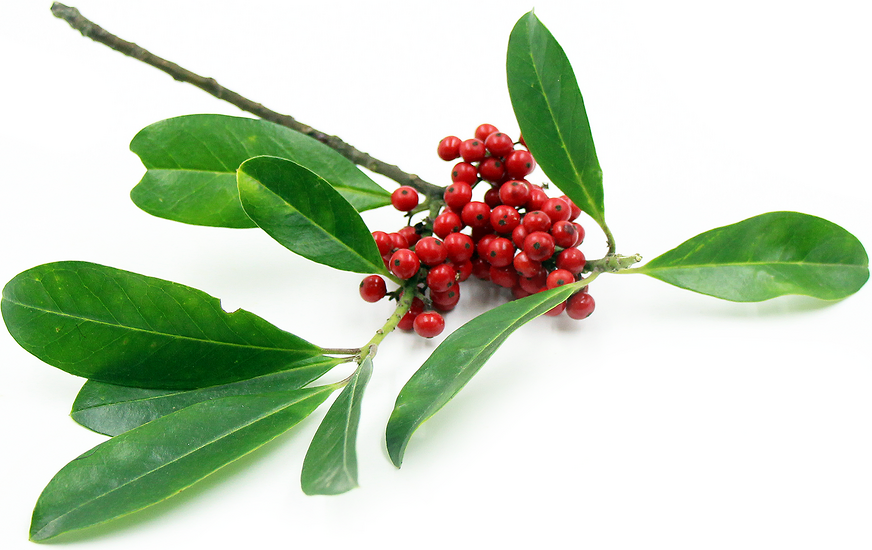


Yerba Mate Leaves
Estimated Inventory, lb : 0
Description/Taste
Yerba Mate leaves are long, emerald-green leaves. They have serrated margins and are leathery to the touch. They grow to up to 11 centimeters in length, and about 5 centimeters across. They have a strong, herbal and bitter taste.
Seasons/Availability
Yerba Mate leaves are available year-round.
Current Facts
Yerba Mate is botanically classified as Ilex paraguariensis, and is a type of holly. It is said to have the strength of coffee (but do not produce the same jittery effect as coffee), and more health benefits than green tea. The young leaves are typically harvested, then dried over a wood fire before being ground into a powder. This is stored for 12 months before being used to brew the stimulating Yerba Mate tea, which is said to improve physical and mental performance.
Nutritional Value
Yerba Mate owes its stimulating effects to the presence of xanthines, which contain caffeine and which are also found in coffee, tea and chocolate. However, they do contain less caffeine than coffee, dispelling the myth that it is as strong as coffee itself. Yerba Mate leaves also contain tannins and saponins, which have anti-inflammatory effects. They have small traces of vitamin C and vitamin E, as well as selenium and zinc. They contain caffeine, and studies have shown that consuming even a small amount can help burn fat more efficiently while exercising. Yerba mate may have antifungal and antibacterial properties, and one study has shown that it deactivated the E. coli bacteria, helping with food poisoning symptoms.
Applications
Yerba Mate leaves are most often used for the stimulating tea. To improve its bitter taste, the tea is often served with sugar, lemon juice, or milk. Or, the dried leaves are mixed with citrus rinds or peppermint. They can be brewed using a French press. Like any other tea, one batch of leaves can be used several times by topping up the original brew with hot water. Unlike tea, the flavor actually intensifies with each new infusion. Yerba Mate leaves are dried before being stored. A dehydrator can be used for the drying process. The dried leaves can be stored for many months in an airtight container in a cool, dry place.
Ethnic/Cultural Info
The Yerba Mate drink has a long history. It is traditionally brewed and drunk out of a calabash, made from a squash gourd. The liquid is sucked through a metal straw with a closed sieve on the bottom, which also acts as a strainer. Each person's mate cup is considered personal, and there is a ritualistic aspect to drinking Yerba Mate, where the recepticle is passed around a circle of friends. Traditional herbalists also use Yerba Mate leaves to help alleviate mental and physical fatigue. It is also used as a diuretic, and to treat depression, headaches and nerve pain. Yerba Mate leaves are also used in poultices, and applied on external ulcers.
Geography/History
Yerba Mate leaves are native to South America, including Argentina, Paraguay and Brazil. It greows in humid, tropical highlands and can be found wild near streams and rivers. It is also garmed commercially around the world. Yerba Mate has been used by the indigenous people of South America, and have been recorded since the 1500s. No archelogical evidence shows that they were in use in pre-Columbian times, but it is assumed that tribes have used the leaves for centuries. Evidence shows that the Guarani people in Paraguay cultivated the plants, and taught Spanish explorers how to brew Yerba Mate tea. Jesuit missionaries then began to grow Yerba Mate in plantations in the 1600s, leading to more widespread cultivation.
Recipe Ideas
Recipes that include Yerba Mate Leaves. One
| Pamela Salzman |
|
Yerba Mate Cacao and Mint Tonic |




